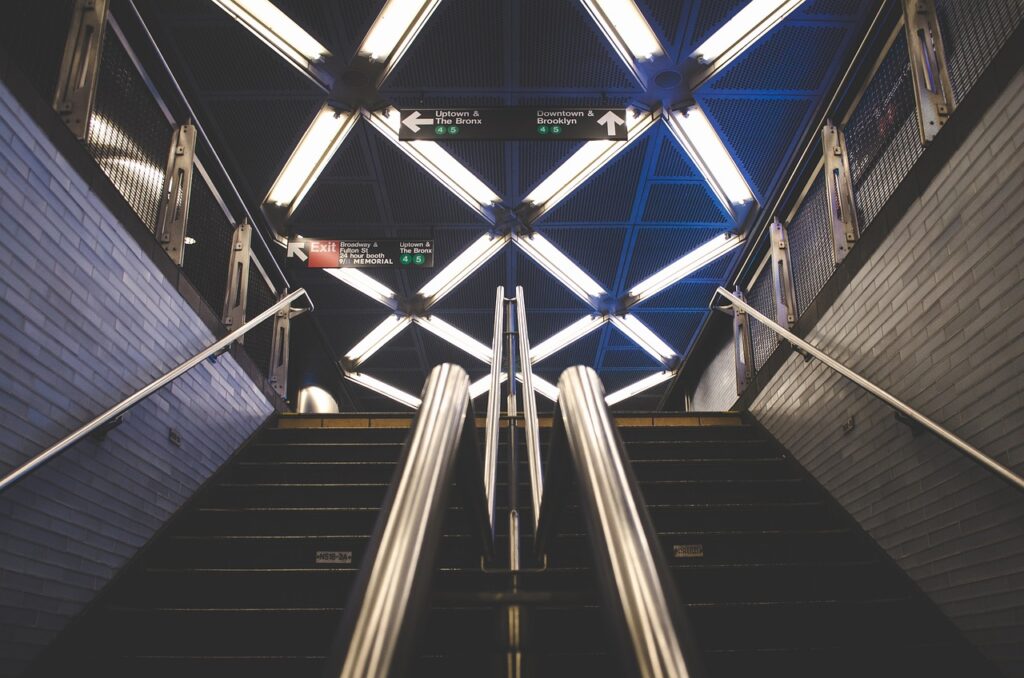
The impatient query of children traveling in the back seat of a car—Are We There Yet?—can just as easily be applied to Americans with Disabilities Act (ADA) compliance. Thirty-two years after the January 26, 1992 ADA effective date, the answer is “no, we are not there yet.” Violations abound.
1. Sidewalks and Curb Ramps
The lack of a good sidewalk network still deprives wheelchair users with mobility impairments from using public transportation due to access barriers between home and transit stops and from transit stops to their destination. In recent years, multiple locations across America provide a fraction of the curb ramps required by federal law—Atlanta (30%); Baltimore (1.3%); Oregon (9%); and Boston (less than 50%). Los Angeles estimated it would cost $1.4 billion and take 30 years to comply.
Want to subscribe to receive blog updates sign up today!
2. Trains
Train systems built before the ADA are not wheelchair accessible and, according to the Federal Transit Administration, about 20% of transit stations nationwide still do not have elevators or ramps. For example, only about 25% of New York City subway trains are served by elevators and these are frequently broken. And despite an historic settlement with the Metropolitan Transit Authority on April 24, 2023, it will take until 2055 for at least 95% of train stations to be made accessible with elevators and ramps.
3. Taxis
A family of three people with disabilities traveling with two power scooters, a bunch of stools and suitcases tell how hard it was to get a taxi from a public transportation terminal to a hotel. Upon placing calls to cab companies that advertised service to disabled people, the first two companies denied service and hung up on them. A third company declined saying they don’t pick up from the airport and only transport people to and from doctor appointments. It took “sweet talk” and a private pay fare of $75 to convince the company to accept the ride. Sadly, this experience is more the rule than the exception not only for this family, but for many others with disabilities.
4. Hotels
After reserving an accessible hotel room, there’s no guarantee it will still be available when the disabled guest arrives at the hotel or if the room will even be accessible. In 2022, the United States Department of Justice resolved two such cases:
- In U.S. v. Hilton Worldwide, Inc. (HWI)—after ten year of litigation—a Consent Decree ordered HWI to institute a reservations policy for accessible guest rooms that will hold open two non-premium accessible guest rooms as the last rooms sold at each hotel.
- In U.S. v. Badrivishal LLC (owner and operator of the Holiday Inn Express Hotel & Suites in Columbus, Ohio), the hotel must ensure that its rooms, including bathrooms, that are required and advertised as accessible to people who use wheelchairs are, in fact, accessible.
5. And so much more
What can you add to the list of ADA violations that need to be addressed?
Photo Credit: Image by Foundry Co from Pixabay
You may also want to read:
- Access Board Rule. “Accessibility Guidelines for Pedestrian Facilities in the Public Right-of-Way.” August 8, 2023. https://www.federalregister.gov/documents/2023/08/08/2023-16149/accessibility-guidelines-for-pedestrian-facilities-in-the-public-right-of-way
- Disability Rights Advocates. “Historic Settlement to Make NYC Subway Accessible to Disabled.” April 26, 2023. https://www.disabled-world.com/disability/accessibility/nyc-subway.php
- Angela Muir Van Etten. “Defendants Feign Ignorance When Hit With ADA Complaints.” Blog post. January 30, 2023. https://angelamuirvanetten.com/defendants-feign-ignorance-when-hit-with-ada-complaints/
- U.S. v. Hilton Worldwide, Inc. (HWI). December 26, 2022. https://archive.ada.gov/hilton/hilton.htm#:~:text=For%20the%20term%20of%20this,in%20the%20new%20construction%20or
- Amanda Michelle Gomez and Sarah Y. Kim. “D.C. Is Falling Short Of Its Taxi Accessibility Requirements. What Went Wrong?” December 6, 2022. https://dcist.com/story/22/12/06/d-c-is-falling-short-of-its-taxi-accessibility-requirements-what-went-wrong/
- “Justice Department Secures Agreement with Hotel in Columbus, Ohio, to Ensure Access for People with Disabilities.” May 5, 2022. https://www.justice.gov/opa/pr/justice-department-secures-agreement-hotel-columbus-ohio-ensure-access-people-disabilities
- Angela Muir Van Etten. “Take Action Against ADA Access Violations.” Blog post. January 24, 2022. https://angelamuirvanetten.com/take-action-against-ada-access-violations/
- Angela Muir Van Etten. “ADA Compliance Challenge Continues.” Blog post. January 25, 2021. https://angelamuirvanetten.com/ada-compliance-challenge-continues/

One reply on “Are We There Yet?”
I had no idea of the degree of difficulty